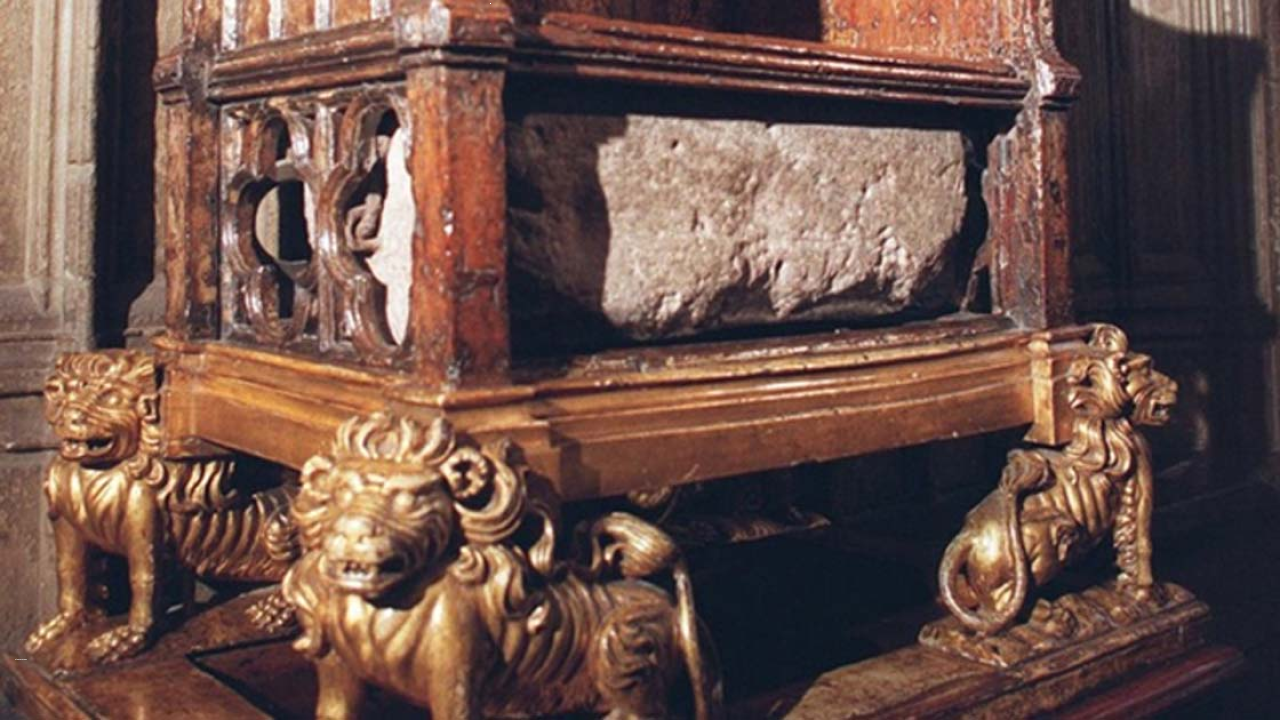Stone of Scone
On May 6, 2023, King Charles III’s coronation ceremony is scheduled to take place at Westminster Abbey in London. This event will mark the first coronation in the United Kingdom since Queen Elizabeth II’s in 1953, making it a highly anticipated and historic occasion. Millions of people from all over the world are expected to tune in to witness this historic event. The coronation ceremony is steeped in tradition, and it symbolizes the continuity and stability of the British monarchy. As part of this historic event, Stone of Scone was recently shifted from Scotland’s Edinburgh Castle to London to be a part of the coronation.
The Stone of Scone: A Symbol of Scottish Monarchy and Nationhood
The Stone of Scone is a 150kg red sandstone slab with some marks on it, seen as a sacred, historic symbol of Scotland’s monarchy and nationhood. The stone has a rich history, and it has been used in Scottish inaugurations for centuries. Monarchs would have their inauguration as kings while sitting on it.
The Stone’s Journey
The Stone of Scone has had a tumultuous history. It was seized by King Edward I of England in 1296 and was incorporated into a small section underneath the wooden Coronation Chair ordered in 1308 for London’s Westminster Abbey. During the suffragettes’ activism, both the chair and the stone sustained some damage when a bomb was set off near the chair.
In 1950, four nationalist Scottish students removed the stone from Westminster Abbey on Christmas Day, and it turned up nearly 800 kilometers away, in the Arbroath Abbey in Scotland. Today, the Stone of Scone is displayed in the Crown Room of the Edinburgh Castle and is only “borrowed” for coronations.
The Legends of the Stone of Scone
Legend says that the Stone of Scone was originally from West Asia and has associations with Biblical stories. The stone was thought to be the very one utilized by the biblical character Jacob. When the stone was brought to Ireland, it was placed upon the sacred Hill of Tara and called “Lia-Fail,” the “fatal” stone, or “stone of destiny.” Fergus Mor MacEirc, the founder of the Scottish monarchy, received the stone in Scotland. Another legend associated with the stone claims that monks at the Scone Palace hid the “real stone” in a nearby river and gave English soldiers a replica.
Month: Current Affairs - May, 2023
Category: International / World Current Affairs


